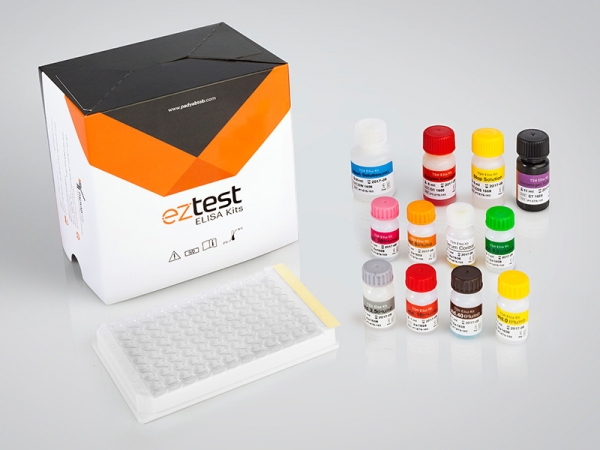| Name | Prolactin (PRL) ELISA Test |
| Full name | Human Prolactin (PRL) ELISA Test Kit |
| Category Name | Fertility ELISA kits |
| Test | 96 |
| Method | ELISA method: Enzyme Linked Immunosorbent Assay |
| Principle | Sandwich ELISA |
| Detection Range | 0-100 ng/mL |
| Sample | 20 µl Serum |
| Sensitivity | 0.5 ng/mL |
| Total Time | ~60 min |
| Shelf Life | 12 Months from the manufacturing date |
Prolactin (PRL) ELISA kit description:
The Diagnostic Automation PRL EIA test kit is for the quantitative determination of human Prolactin (PRL) concentration in human serum.
Materials provided with PRL ELISA Test Kit:
1. Anti-PRL Antibody-coated ELISA Microplate (96 wells)
2. enzyme conjugate reagent: 1 Vials contains anti-PRL-HRP with preservative buffer, ready to use.(1 Vials, 12 ml)
3. standard set, contains 0, 5, 10, 25, 50, & 100 ng/ml(standard 500/84 3rd IS, WHO) ready for use.(6 vials, 0.5 ml )
4. TMB Substrate: Hydrogen peroxide and tetra-methyl benzidine in preservative buffer, ready to use. (1 vial of 11ml)
5. Stop Solution: a normal hydrochloric acid (1 vial, 6 ml).
6. Concentrated washing buffer: PBS-Tween (1 vial 30ml) (20X)
7. Control serum: PRL in serum with preservatives(1Vial, 0.5 ml)
Materials Required, not Provided:
1. Precision pipettes(20,50,100 µl)
2. Distilled or deionized water
3. EIA kit Microplate Washer
4. EIA kit Microplate Reader with a 450 nm, If possible, 630 nm as reference.
5. Absorbent paper
Introduction
Prolactin (PRL) is a polypeptide hormone with a molecular weight of 23 kDa that is synthesized and secreted by anterior pituitary lactotroph cells. Prolactin synthesis and secretion is regulated by the TRH (thyrotropin-releasing hormone) hypothalamic hormones that stimulate the production of prolactin and dopamine as an inhibitor.
Prolactin is present in the plasma of healthy males and females and in several body fluids like cerebrospinal fluid, semen and amniotic fluid. The primary physiologic function of prolactin is to stimulate breast development and milk production in pregnant women. During the third trimester of pregnancy, prolactin levels increase markedly and this increase remain elevated after delivery as long as nursing continues. Nursing stimulates the secretion of prolactin, which in turn provides for continuous milk production and for delayed resumption of menses. High levels of prolactin are associated with galactorrhea (milky nipple discharge) and amenorrhea (abnormal absence of menstruation) in this normal physiologic function. In the absence of pregnancy, the triad of hyperprolactinemia, galactorrhea, and amenorrhea is suggestive of a pathological process. The most frequent cause of these symptoms is a prolactin secreting pituitary tumor.
Principle of the assay
PRL test is designed based on immunoenzymometric assay. This assay is based on specific monoclonal antibody by the use of sandwich method. Anti- PRL monoclonal antibody is used to conjugation with HRP enzyme for coating between the solid phase and an Anti- PRL antibody. By addition of the sample serum, the PRL molecule reacts with mentioned antibodies and sandwiches between bounded antibody on the solid phase and conjugated antibody. After an incubation period (45 minutes at room temperature), the sample is then decanted and the wells are washed to remove unbound-labeled antibody. An enzyme substrate-chromogen is added to the well and incubated for 15 minutes at room temperature, resulting in the development of a blue color. The addition of stop solution will stop the reaction and converts the color to yellow. The intensity is measured at 450 nm. The intensity of the yellow color is directly proportional to the concentration of PRL in the sample.



